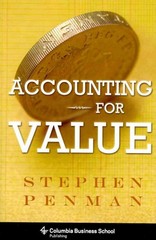Question
South Pacific Chemicals Ltd. is a highly mechanized company that produces chemicals used in various industries. One particular plant specializes in the production of chemicals
South Pacific Chemicals Ltd. is a highly mechanized company that produces chemicals used in various industries. One particular plant specializes in the production of chemicals used in the aluminum industry. Two compounds are produced: compound X-14 and compound S-17. Compound X-14 was originally developed by South Pacific Chemicals Ltd's chemists and played a key role in aluminum extraction from low-grade ore. The patent for X-14 has expired, and competition in this market has intensified dramatically. Compound X-14 produced the highest volume of activity and for many years was the only chemical compound produced by the plant. Five years ago, S-17 was added. Compound S-17 was more difficult to manufacture and required special handling and setups. For the first three years after the addition of the new product, profits increased. In the last two years, however, the plant has faced intense competition, and its sales of X-14 have dropped. In fact, the plant showed a small loss in the most recent reporting period. The plant manager is convinced that competing producers have been guilty of selling X-14 below the cost to produce it - perhaps with the objective of expanding their market shares. The following conversation between Donna Wales, plant manager, and Roland Maxwell, divisional marketing manager, reflects the concerns of the division about the future of the plant and its products.
Roland: "You know, Donna, the divisional manager is very concerned about the plant's trend. He indicated that in this budgetary environment, we can't afford to carry plants that don't show a profit. We shut one down just last month because it couldn't handle the competition."
Donna: "Roland, our compound X-14 has a reputation for quality and value - we have a very pure product. It has been a mainstay for years. I don't understand what's happening."
Roland: "I just received a call from one of our major customers concerning X-14. He said that a sales representative from another firm has ordered the chemical at $10 per kilogram - about $6 less than what we ask. It's hard to compete with a price like that. Perhaps the plant is simply absolete."
Donna: "No. I don't agree. We have good technology. I think that we are efficient. And it's costing a little more than $10 to produce X-14. I don't see how these companies can afford to sell it so cheaply. I'm not convinced that we should meet the price. Perhaps we should emphasize producing and selling more of S-17. Our margin is high on this product, and we have virtually no competition for it. We just recently raised the price per kilogram, and our customers didn't blink an eye."
Roland: "You may be right. I think we can increase the price even more and not lose business. I called a few customers to see how they would react to a 25 percent increase in price, and they all said that they would still purchase the same quantity as before."
Donna: "It sounds promising. However, before we make a major commitment to S-17, I think we had better explore other possible explanations. The market potential is much less than that for X-14. I want to know how our production costs compare to our competitors. Perhaps we could be more efficient and find a way to earn our normal return on X-14. Besides, my production people hate producing S-17. It's very difficult to produce."
After meeting with Roland, Donna requested an investigation of the production costs and comparative efficiency. Independent consultants were hired. After a three-month assessment, the consulting group provided the following information on the plant's production activities and costs associated with the two products:
X-14
S-17
Production (kilograms)
1,000,000
200,000
Selling price
$15.93
$12.00
Overhead per unit*
$6.41
$2.89
Prime cost per kilogram
$4.27
$3.13
Number of production runs
100
200
Receiving orders
400
1,000
Machine hours
125,000
60,000
Direct labor hours
250,000
22,500
Engineering hours
5,000
5,000
Material handling (number of moves)
500
400
*Calculated using a plantwide rate based on direct labor hours, which is the current way of assigning the plant's overhead to its products.
The consulting group recommended switching the overhead assignment to an activity-based approach. It maintained that activity-based costing assignment is more accurate and will produce better information for decision making. To facilitate this recommendation, the plant's activities were grouped into homogeneous sets based on common processes, activity levels, and consumption ratios. The costs of these pooled activities follow:
Overhead pool:
Setup costs$240,000
Machine costs1,750,000
Receiving costs2,100,000
Engineering costs2,000,000
Material-handling costs900,000
Total$6,990,000
The pools are named for the major activities found within them. All overhead costs within each pool can be assigned using a single driver (based on the major activity after which the pool is named).
REQUIRED
1.Critically evaluate the consulting groups recommendation of switching the overhead assignment to an activity-based approach.(15 marks)
2.Verify the overhead cost per unit reported by the consulting group using direct labor hours to assign overhead. Compute the per-unit gross margin for each product. Show all workings.(10 marks)
3.Recompute the unit cost of each product using activity-based costing. Compute the per-unit gross margin for each product.Show all workings.(15 marks)
4.With reference to your analysis in (3), what recommendations that addressed the issues in the case would you suggest for South Pacific Chemicals Ltd. management team to consider, while competing in a competitive environment?(10 marks)
Step by Step Solution
There are 3 Steps involved in it
Step: 1

Get Instant Access to Expert-Tailored Solutions
See step-by-step solutions with expert insights and AI powered tools for academic success
Step: 2

Step: 3

Ace Your Homework with AI
Get the answers you need in no time with our AI-driven, step-by-step assistance
Get Started


